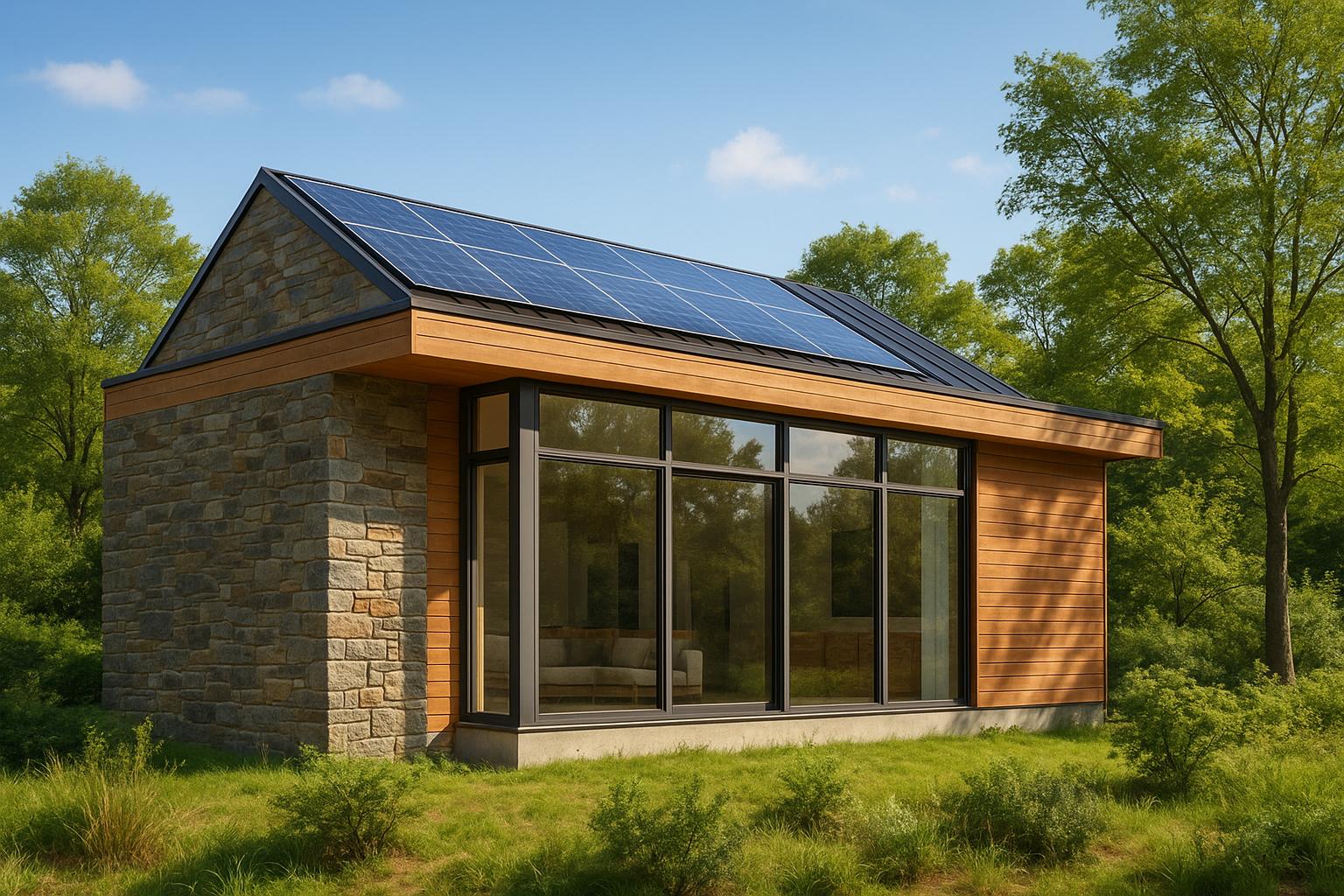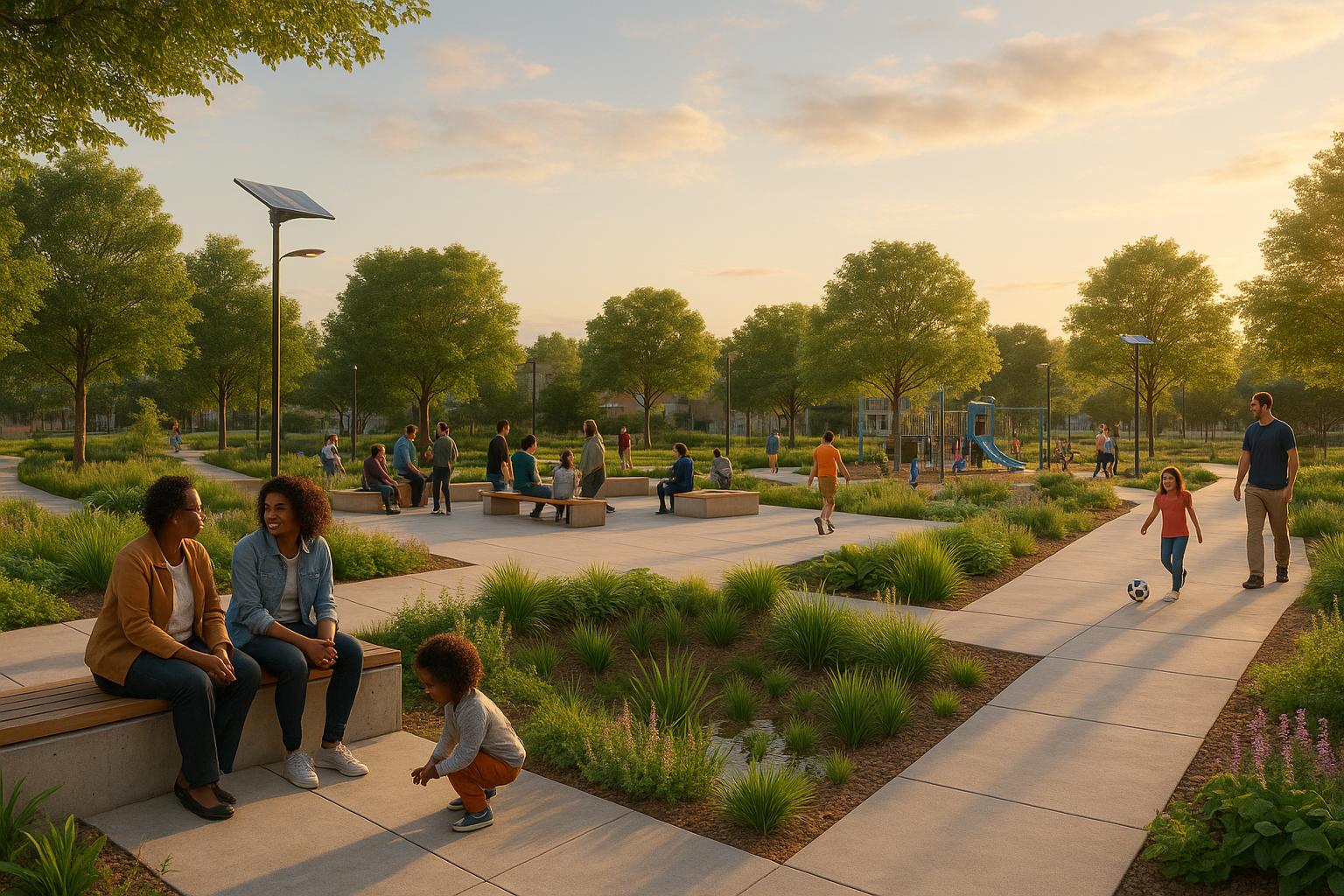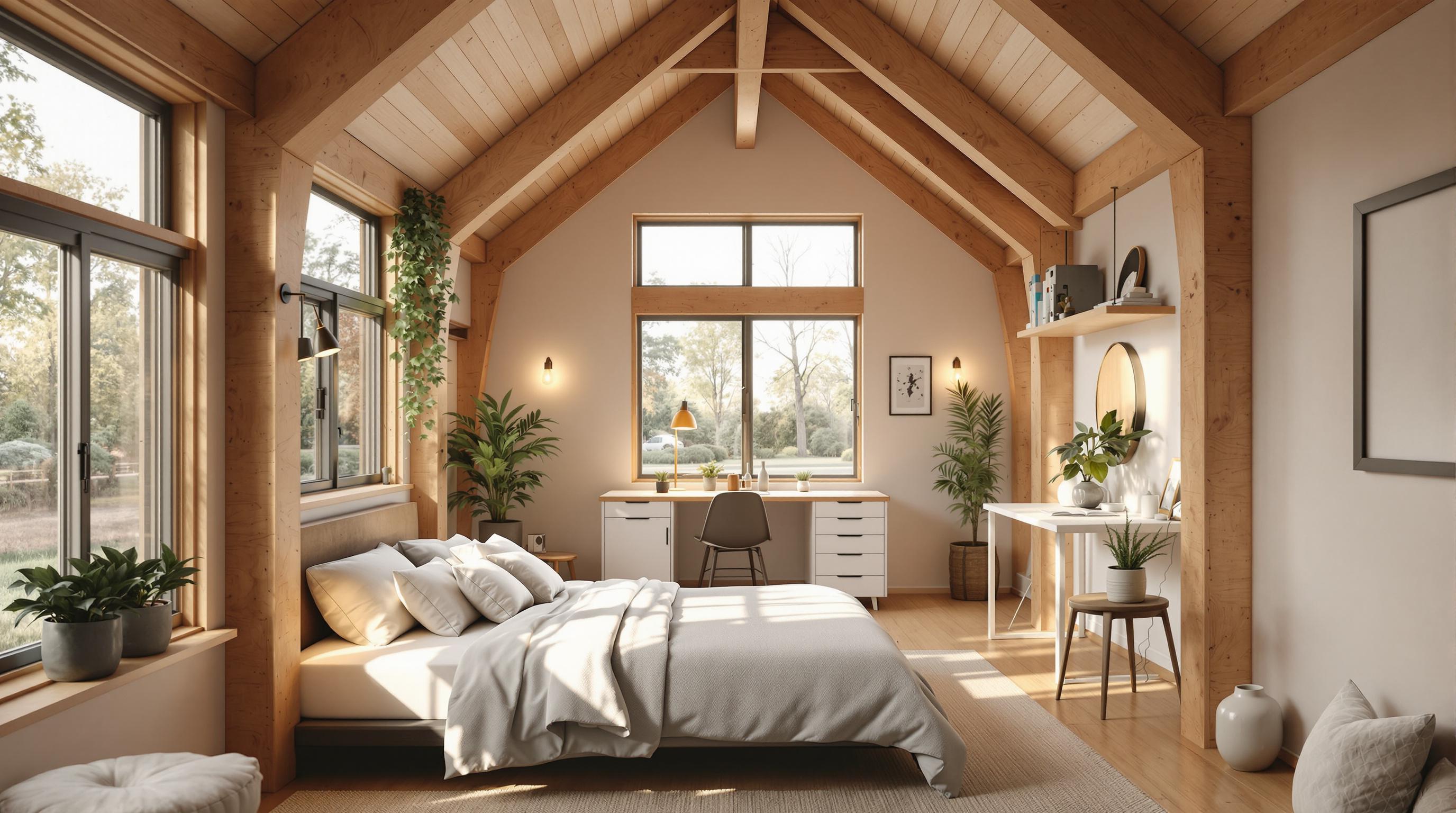Good lighting can make cities safer. Research shows that well-planned lighting reduces crime by up to 21%, improves visibility, and encourages community activities. Here's how:
- Crime Prevention: Bright, even lighting deters crime by eliminating dark spots and improving surveillance.
- Safe Navigation: Consistent lighting on walkways, intersections, and transit stops prevents accidents and helps people move confidently.
- Community Engagement: Balanced lighting makes public spaces inviting for social and economic activities.
Smart LED systems, motion sensors, and energy-efficient designs are key tools for creating safer urban environments while reducing costs and light pollution. Proper lighting transforms how people experience cities after dark.
Principles for Designing Safe Urban Lighting
Placing Lights in Key Areas
Strategically lighting high-traffic areas like walkways, entrances, parks, and intersections plays a major role in boosting safety and discouraging crime [1].
Lights should be spaced evenly to provide clear sightlines and reduce hidden spots.
| Area Type | Lighting Approach for Safety |
|---|---|
| Walkways | Uniform ground-level lighting to prevent trips and falls |
| Entrances | Bright, focused lighting for clear visibility of faces |
| Parks | Balanced lighting for safe activities |
| Intersections | Multi-directional lighting for clear navigation |
Maintaining Consistent Lighting Levels
To ensure safety, it’s critical to avoid glare and dark spots, which can hinder visibility. Smart lighting systems can adjust brightness in real time based on activity levels [1].
Modern lighting controls offer:
- Real-time adjustments based on activity
- Automated dimming during quieter hours
- Even light distribution to prevent shadows
"By incorporating thoughtful lighting designs that adapt to different urban zones and respect environmental considerations, public spaces can be made more inviting and safe" [2].
Using Energy-Saving Lighting Options
Energy-efficient lighting not only supports urban safety but also reduces environmental impact. LED lights, for example, provide high-quality illumination while using less energy [1].
Smart systems include features like:
- Motion sensors for lighting only when needed
- Remote monitoring and automated controls
- Integration with broader urban safety networks
Studies suggest that warmer light temperatures (3000K or less) improve the feeling of safety while also being less harmful to the environment [3][5]. By using LED fixtures that limit light pollution, cities can strike a balance between security and environmental care [1].
Ways to Use Lighting to Make Cities Safer
Preventing Crime with Better Lighting
Research from the University of Sheffield's lighting group highlights that improving lighting quality and ensuring even distribution can reduce crime rates in urban areas [1][2].
Here are some practical applications:
| Location Type | Lighting Solution | Safety Benefit |
|---|---|---|
| Building Entrances | Bright, focused lighting | Enhances face recognition, deters crime |
| Parking Areas | Uniform coverage lighting | Removes hiding spots |
| Public Transit Stops | Multi-directional lighting | Improves visibility and sightlines |
Good lighting not only discourages criminal activity but also makes it easier for people to move safely through cities.
Helping People Move Around Safely
Smart lighting systems can enhance both pedestrian and vehicle navigation. A great example is Toledo's smart streetlights, which improved traffic flow and safety while cutting costs [1][2].
Key considerations for safe lighting include:
- Intersections and pathways: Multi-directional lighting reduces accidents and helps prevent trips or falls.
- Transit zones: Bright, consistent lighting ensures passengers can board and exit safely.
By addressing these areas, cities can create safer and more efficient environments for everyone.
Making Public Spaces More Welcoming
Thoughtfully designed lighting can transform public spaces into safe and inviting areas. Durable lighting solutions that account for urban growth and changes are essential [5].
Focus on these elements to keep lighting effective:
- Smart controls: Use motion sensors and timers for better functionality.
- Durability: Install fixtures at heights that prevent vandalism.
- Long-term planning: Position lights to adapt to future urban developments.
Proper lighting doesn’t just improve safety - it makes public spaces more enjoyable and functional for everyone.
Examples and Tips for Urban Lighting Design
Examples of Successful Lighting Projects
Smart lighting systems have played a key role in improving urban safety. LED lights with reduced light pollution and automated brightness controls adjust based on time and activity levels, creating safer spaces while cutting down on energy use [1].
LED bollard lights are another great example. They improve visibility along pathways, help guide traffic, and boost security in public areas [6].
These projects show how combining thoughtful design with technology can make cities safer and more efficient.
Tips for Modern Urban Lighting
Designing effective urban lighting involves addressing several key factors to ensure safety and efficiency:
- Use of Smart Technology: Incorporate tools like predictive analytics and real-time monitoring systems. These can help detect and address potential security concerns quickly [2].
- Thoughtful Installation: To minimize light pollution and vandalism, use shielded fixtures, place lights at secure heights, and include dimming options for low-activity times [3][4].
- Ongoing Maintenance: Regular check-ups and updates ensure lighting systems remain effective and adapt to evolving urban needs over time. This keeps illumination levels consistent and reliable.
sbb-itb-1be9014
Lighting for Safety and CPTED
Conclusion: Lighting as a Tool for Safer Cities
Lighting design plays a key role in making urban areas safer. Thoughtful lighting does more than brighten spaces - it changes how people feel and interact with their cities after dark.
Smart lighting systems adjust to community needs, offering efficient illumination while conserving energy. The Five Principles for Responsible Outdoor Lighting - focused lighting, appropriate brightness, shielding to prevent glare, warm tones, and ensuring practicality - serve as a guide for creating safer and eco-friendly urban environments [3][4].
"Lighting at night integrates psychological, environmental, and social elements, shaping perceptions of safety and the experience of darkness." [5]
Cities that embrace smart technology and responsible lighting practices not only reduce crime but also turn public spaces into lively areas for social and economic activities. This approach balances safety with sustainability, fostering trust and encouraging vibrant nighttime engagement.
FAQs
How can smart street lights help deter crime and improve safety in cities?
Smart street lights use motion sensors and real-time monitoring to adjust lighting based on activity, providing illumination only where and when it’s needed. These systems have been shown to reduce crime by 20% while lowering energy consumption by 30-50% [4].
Here’s how specific features contribute to urban safety:
| Feature | How It Improves Safety |
|---|---|
| Motion Detection | Lights up when movement is detected, discouraging offenders. |
| Real-time Alerts | Sends notifications for quick action on suspicious activity. |
| Adaptive Brightness | Keeps visibility high in areas prone to safety concerns. |
| Remote Monitoring | Ensures lights are functioning properly at all times. |


